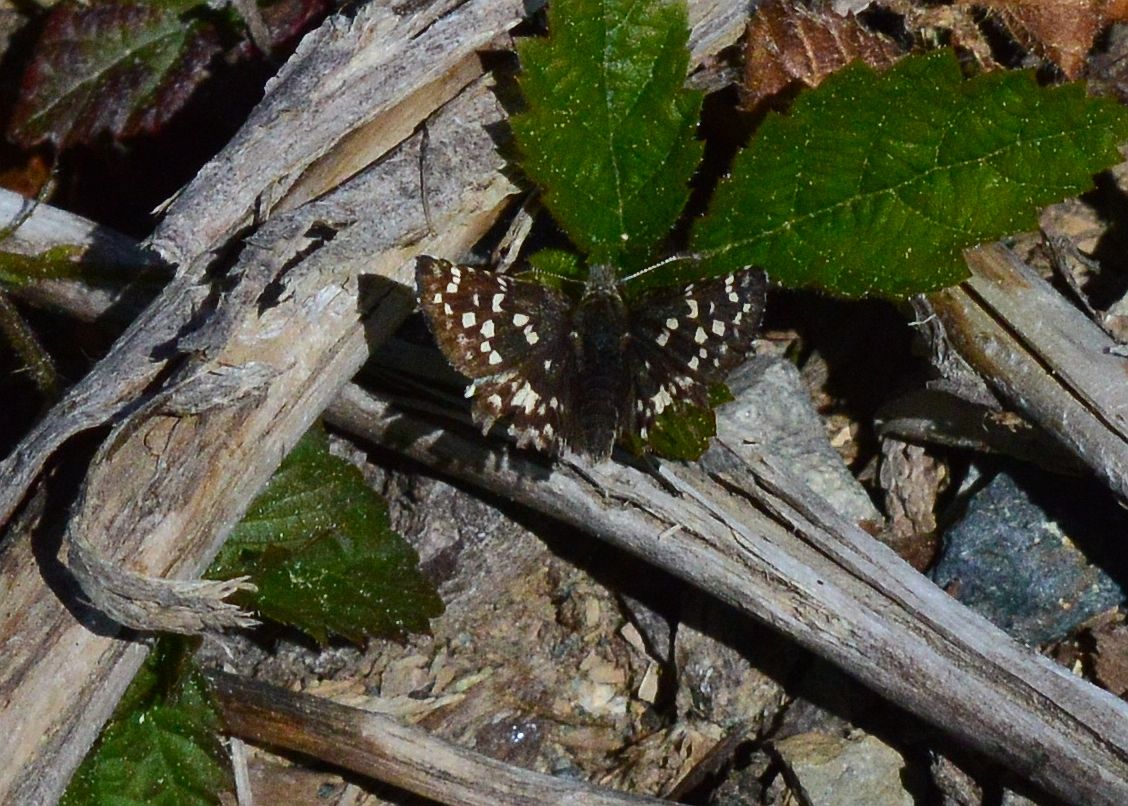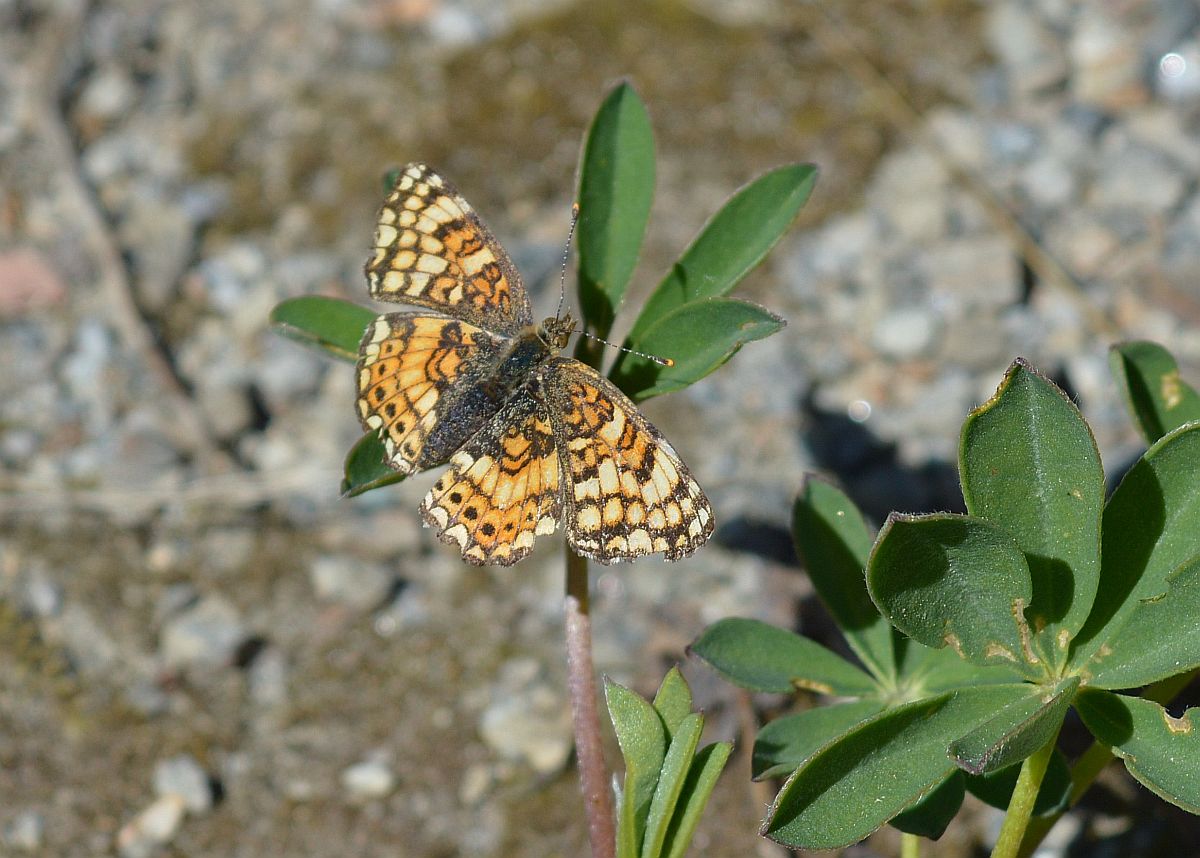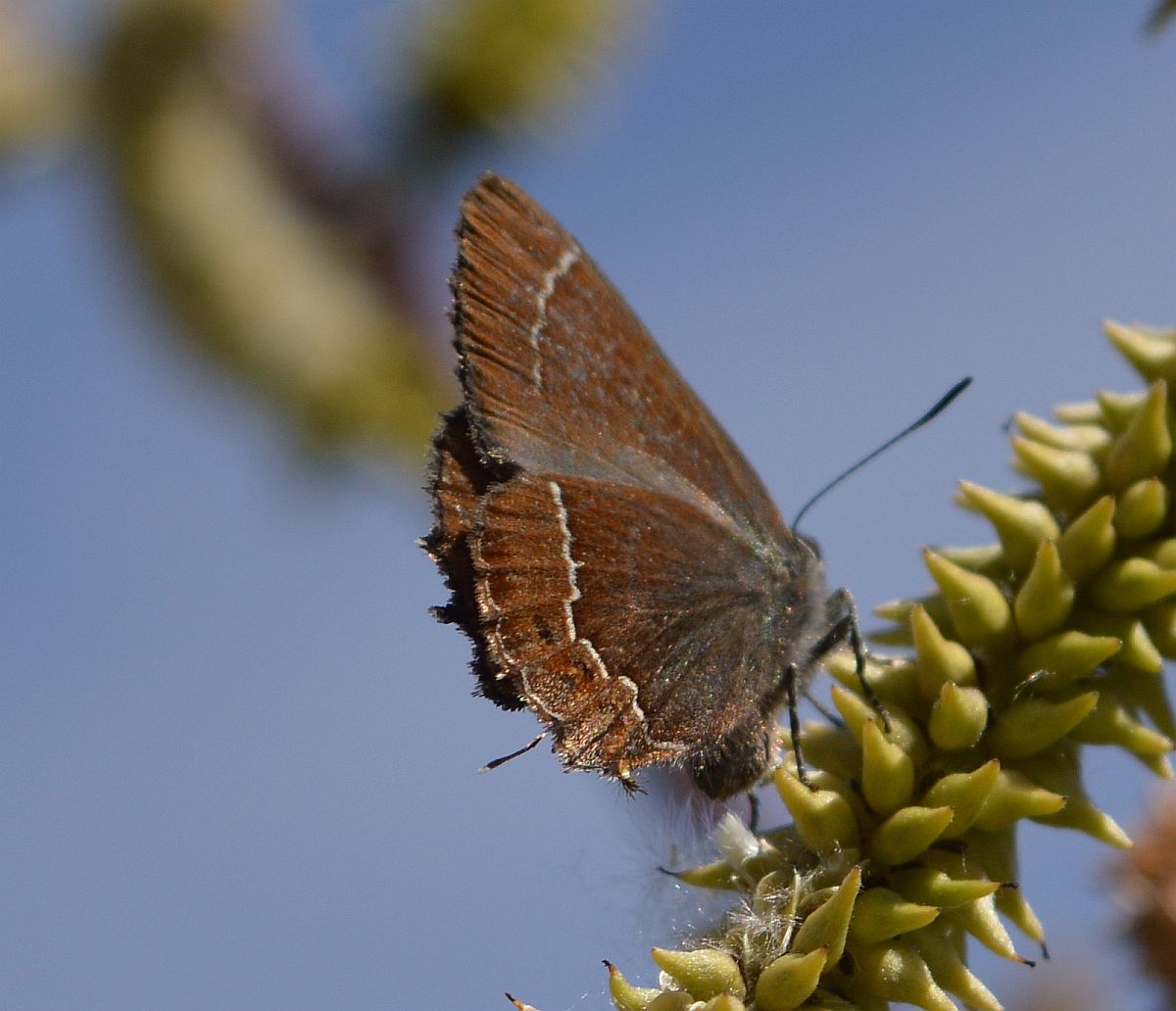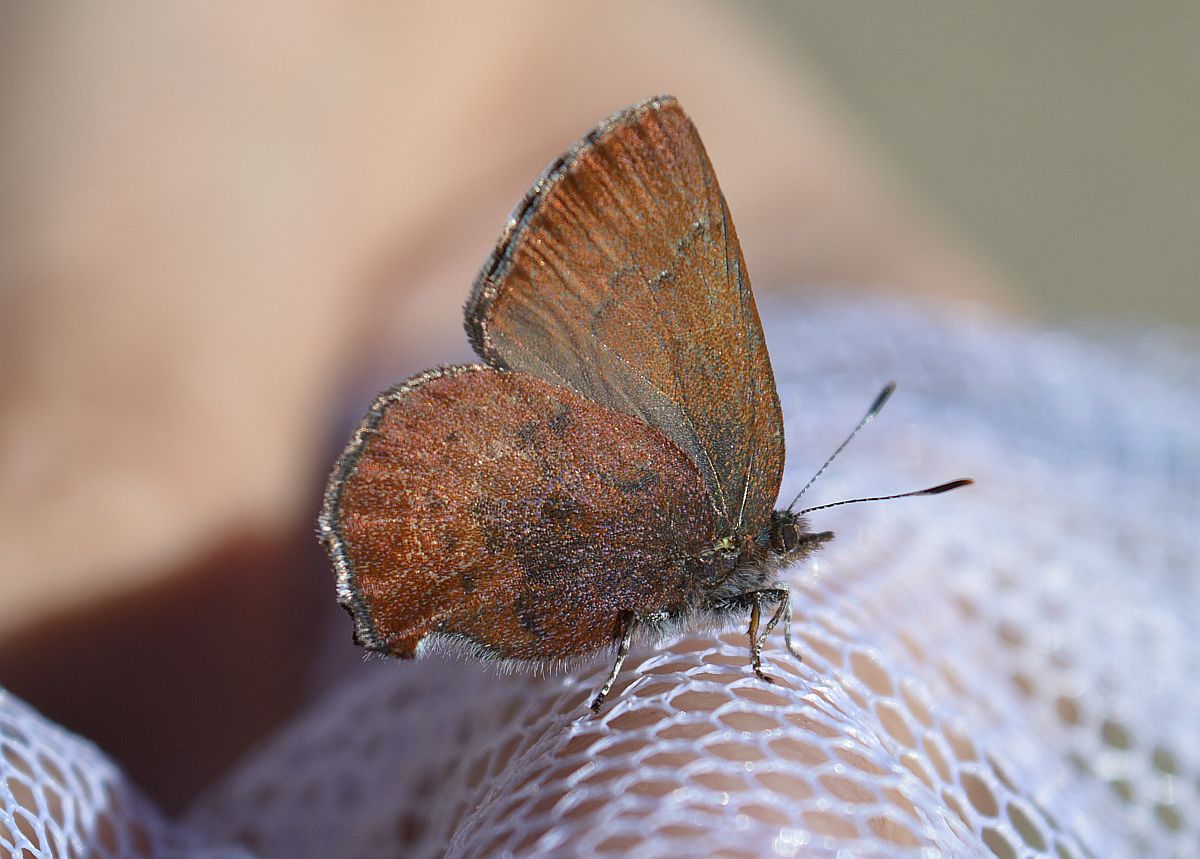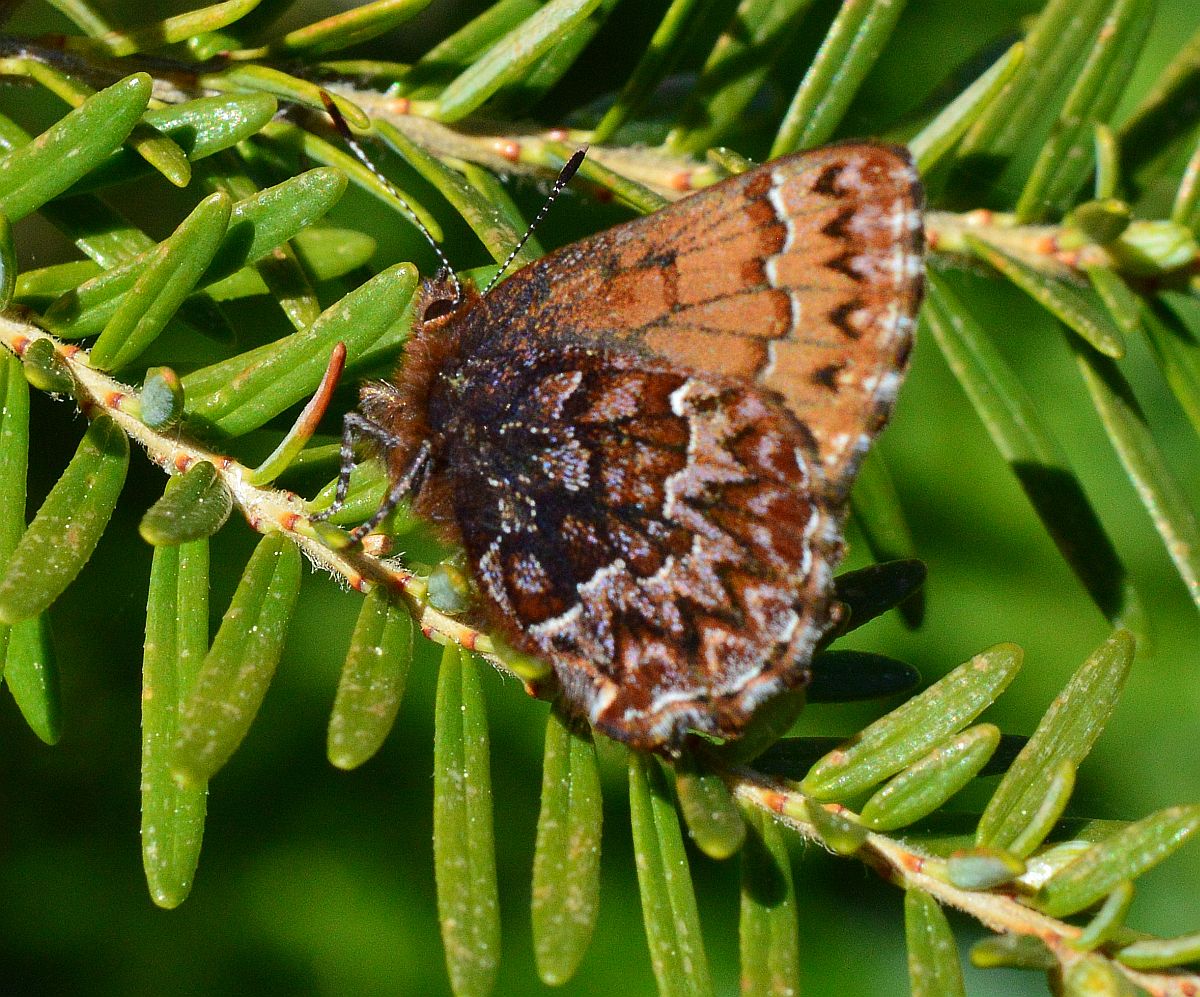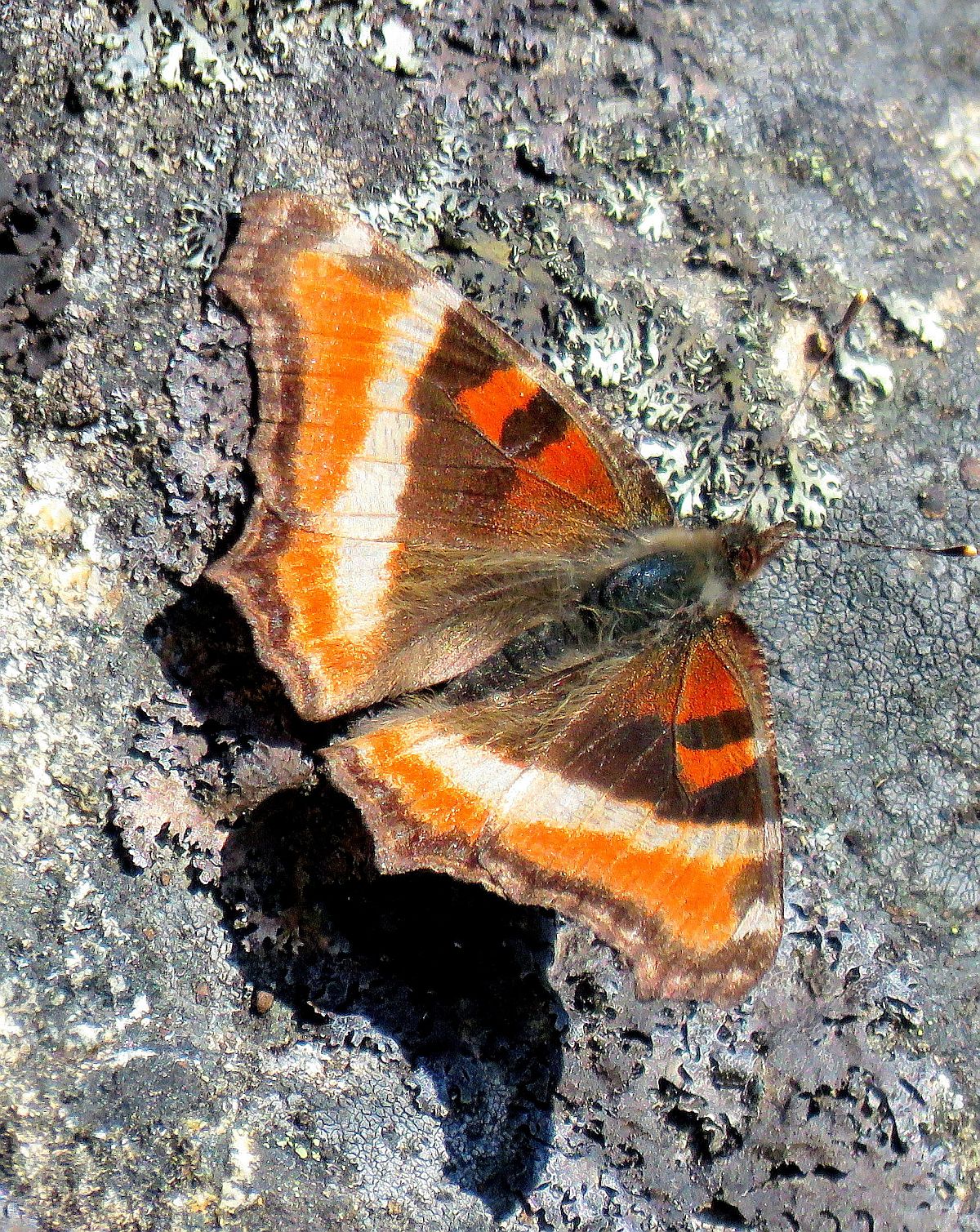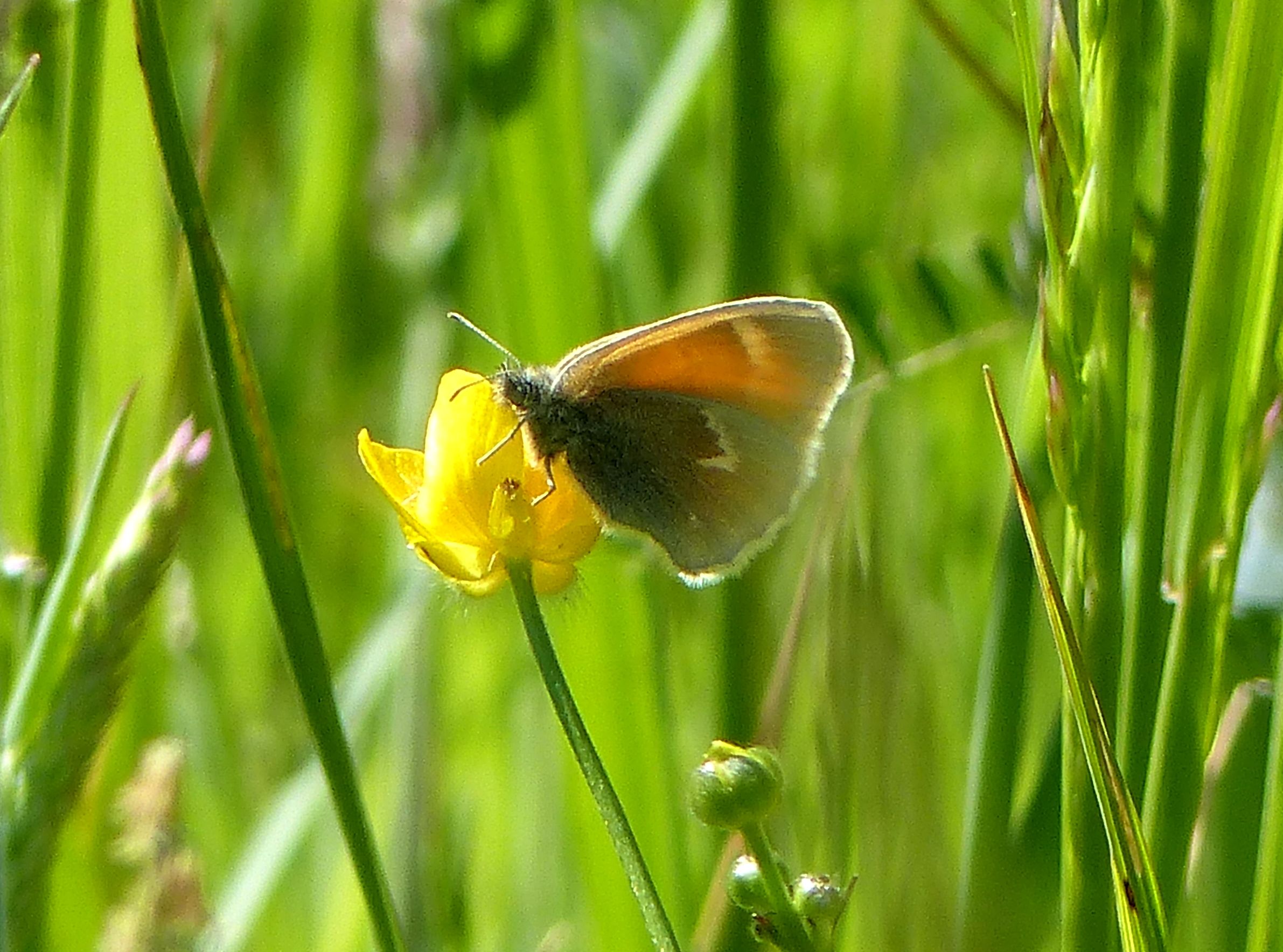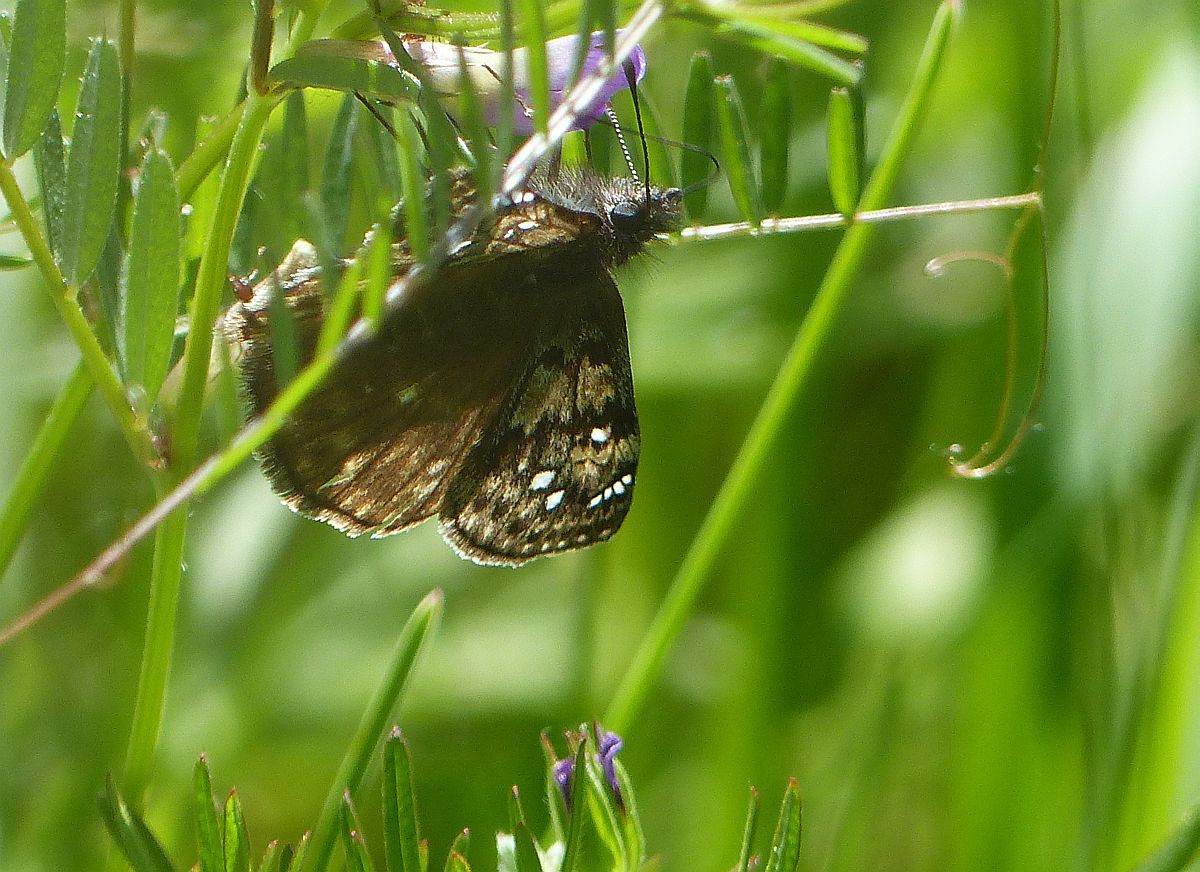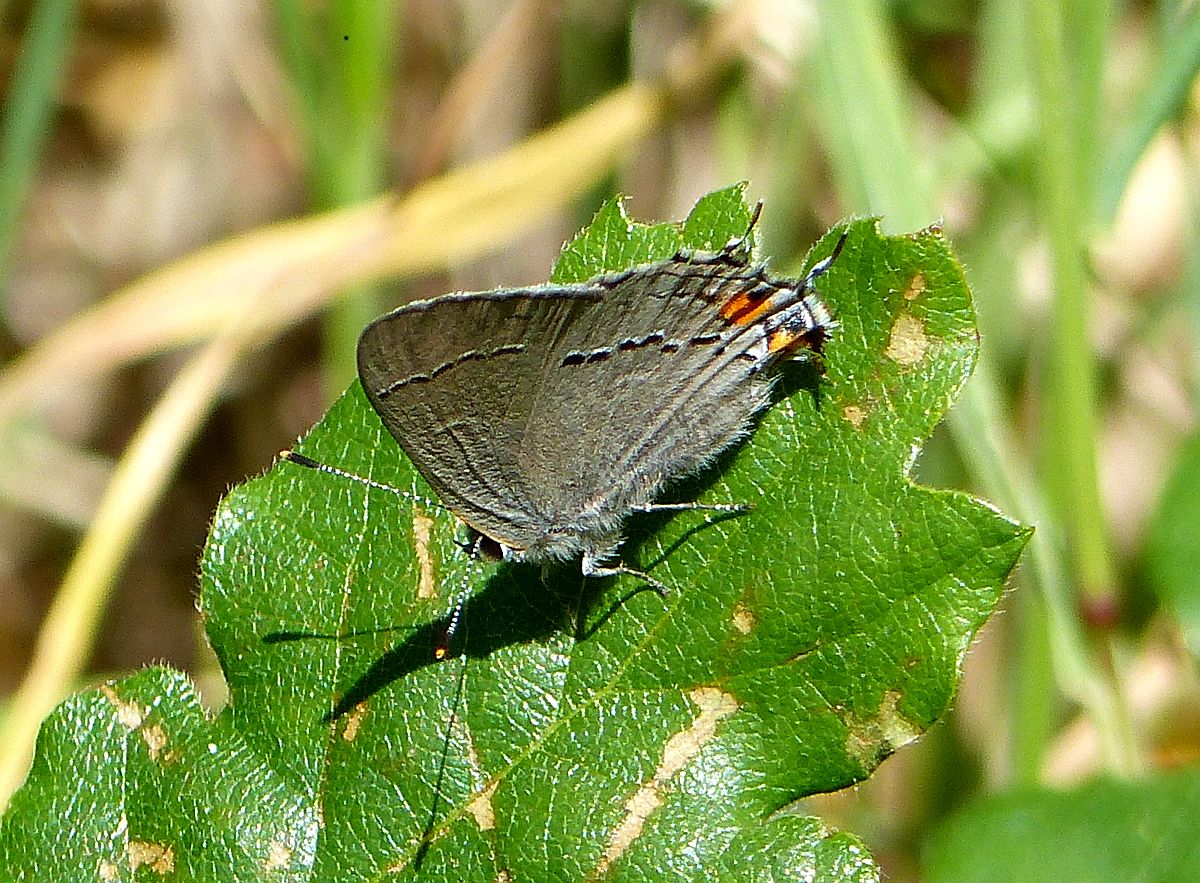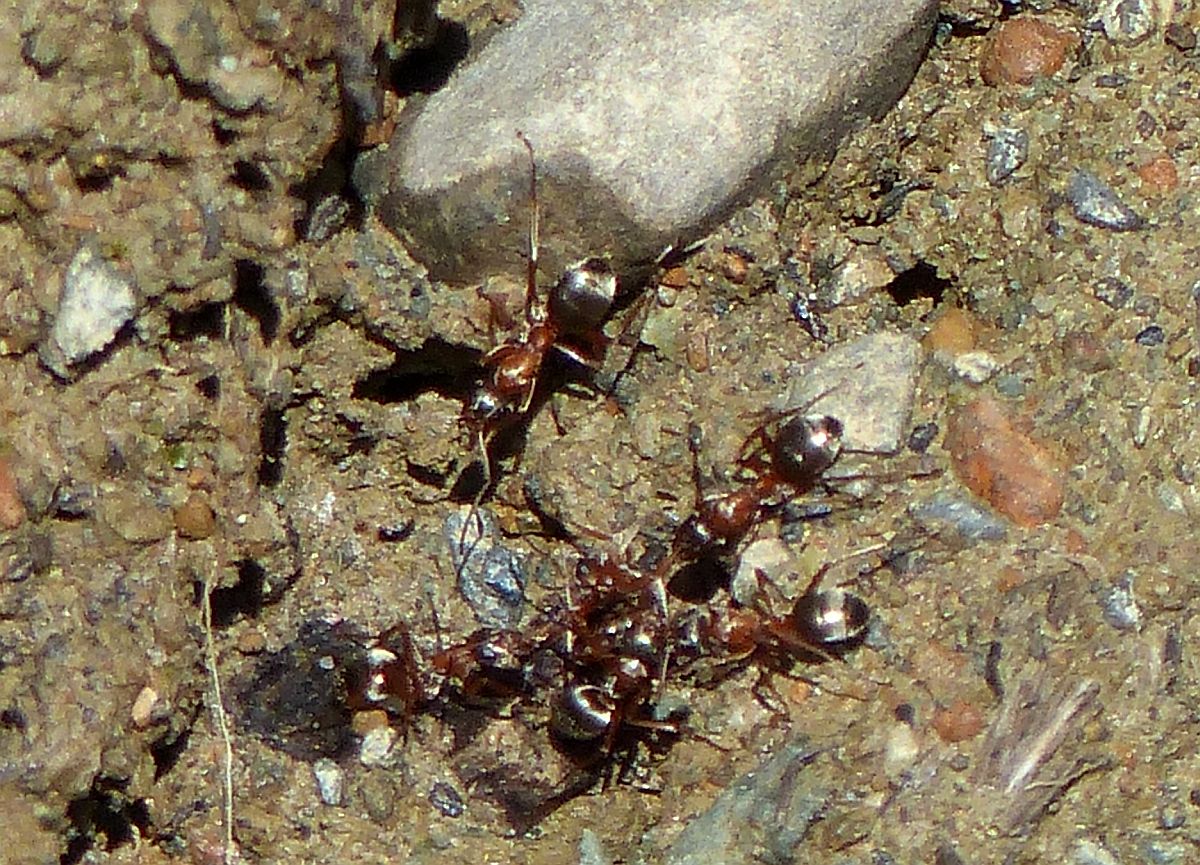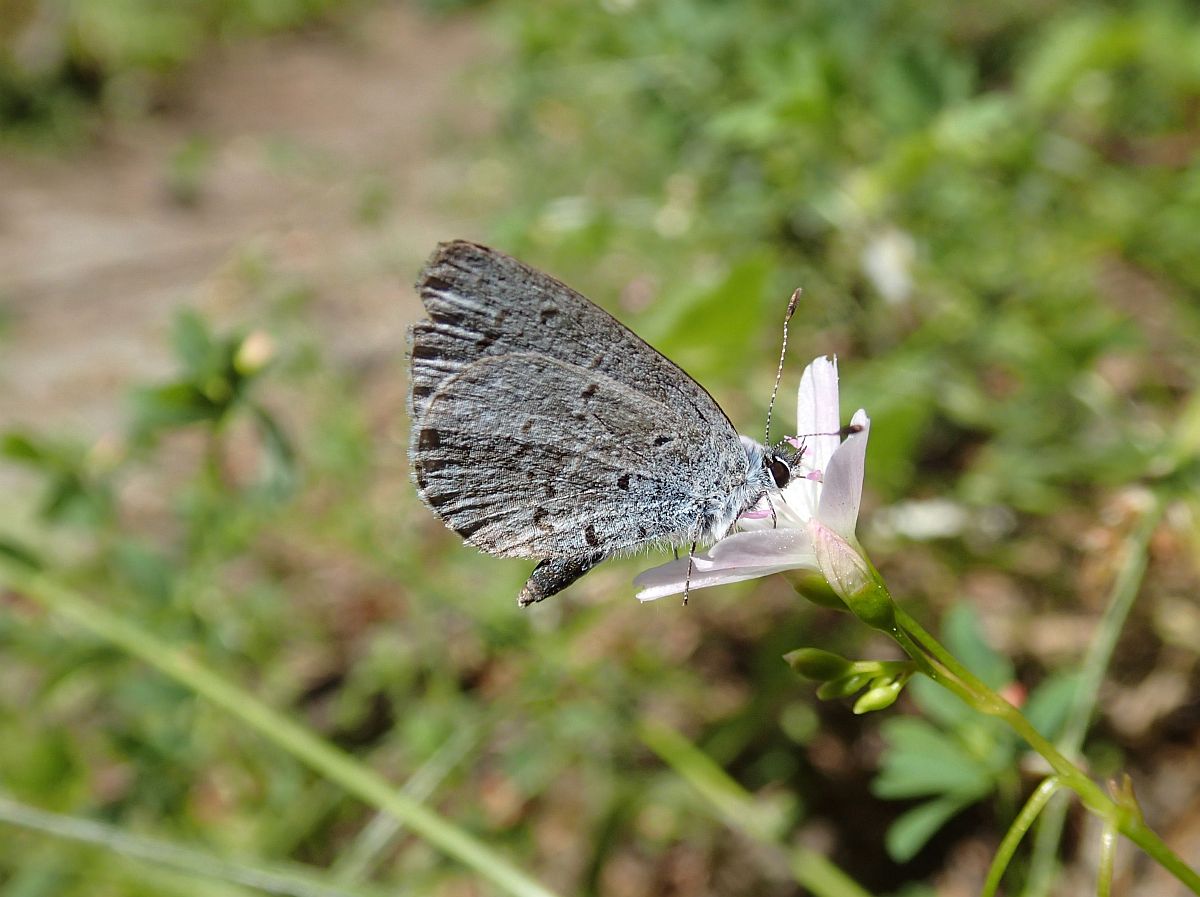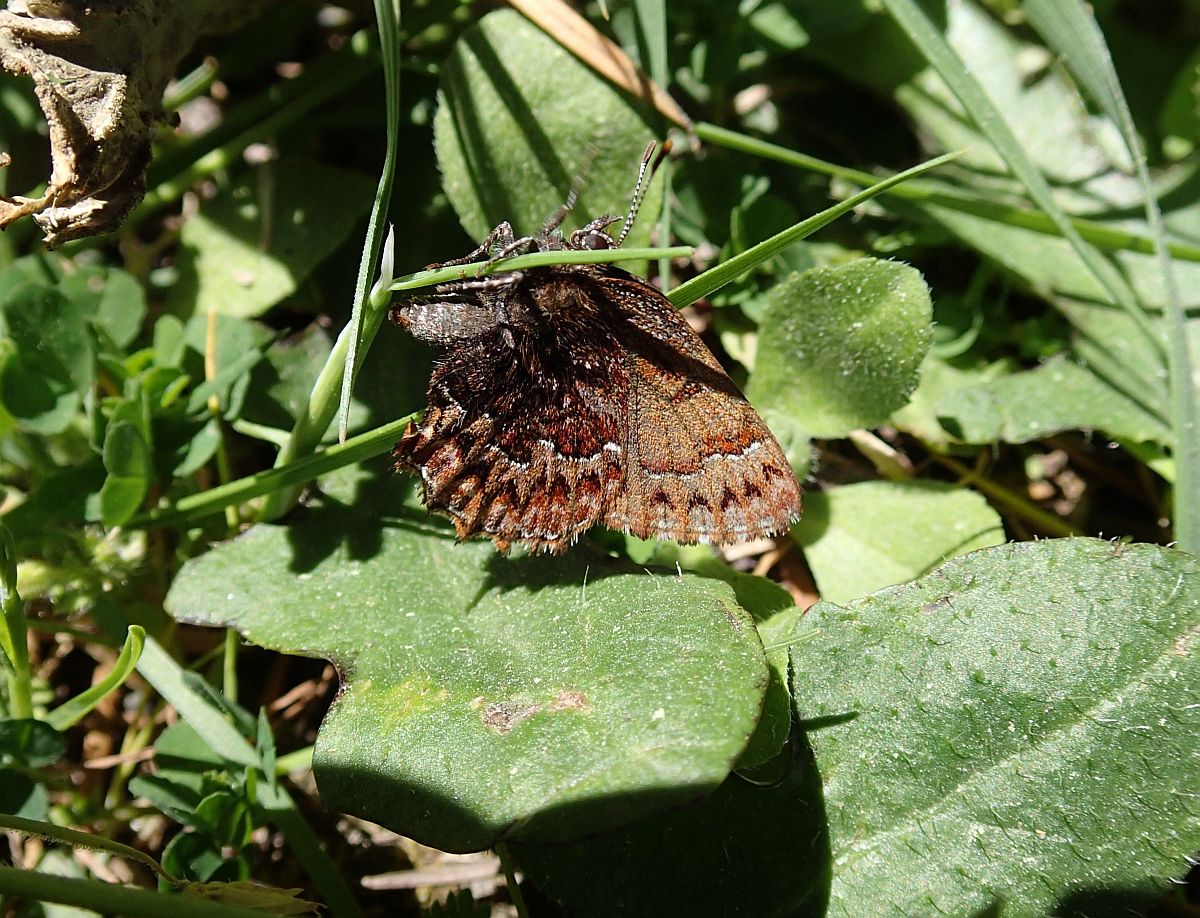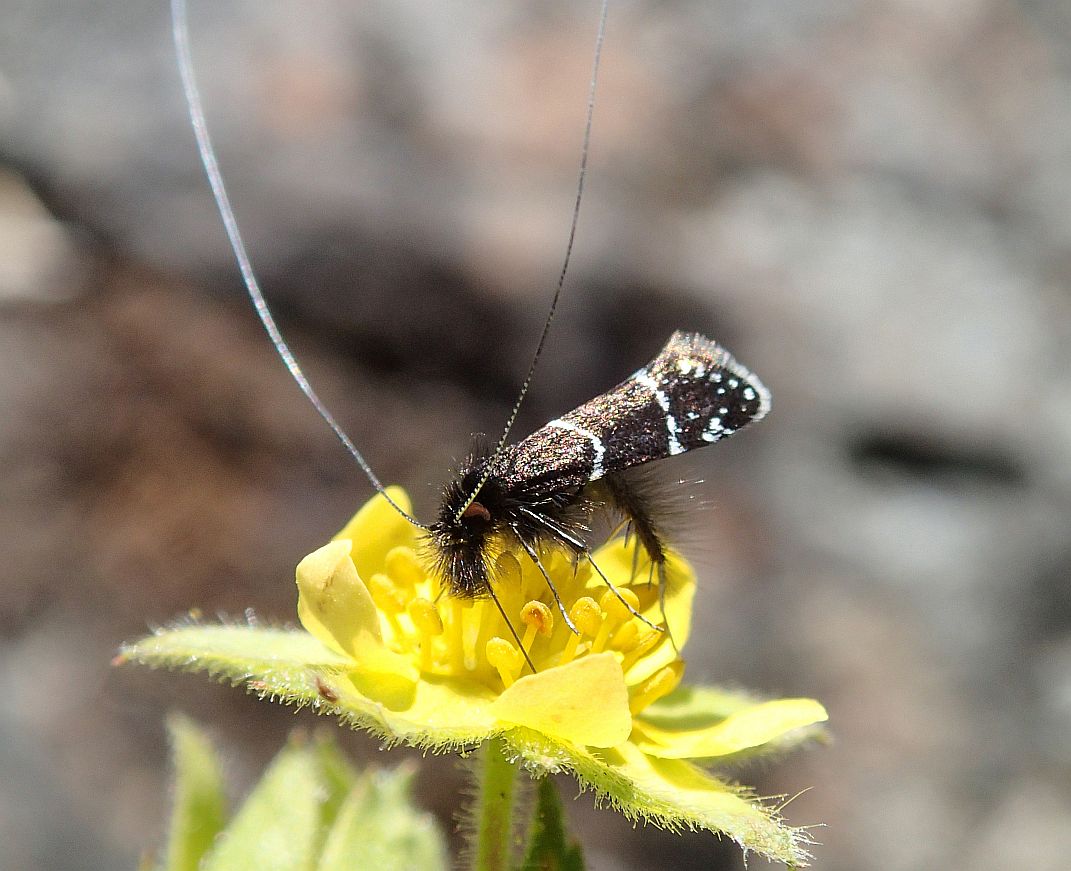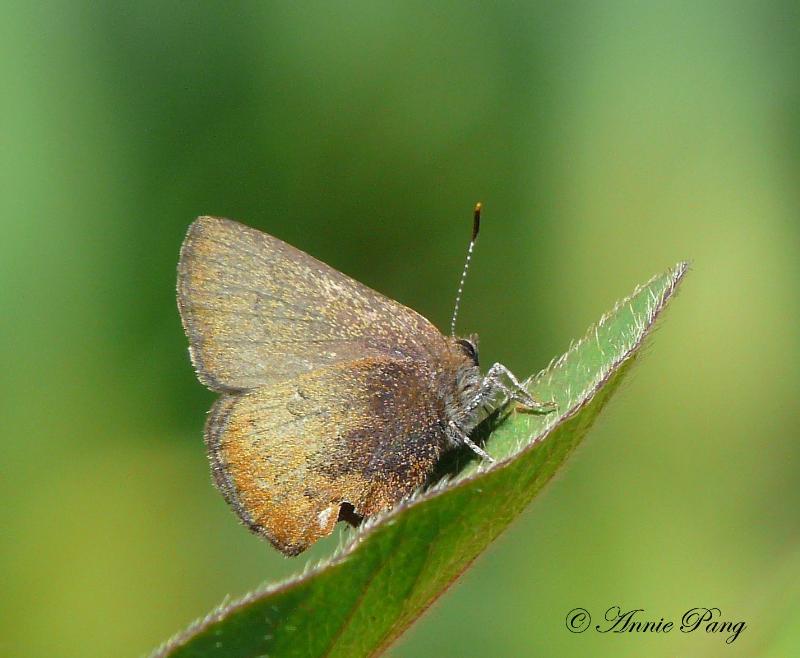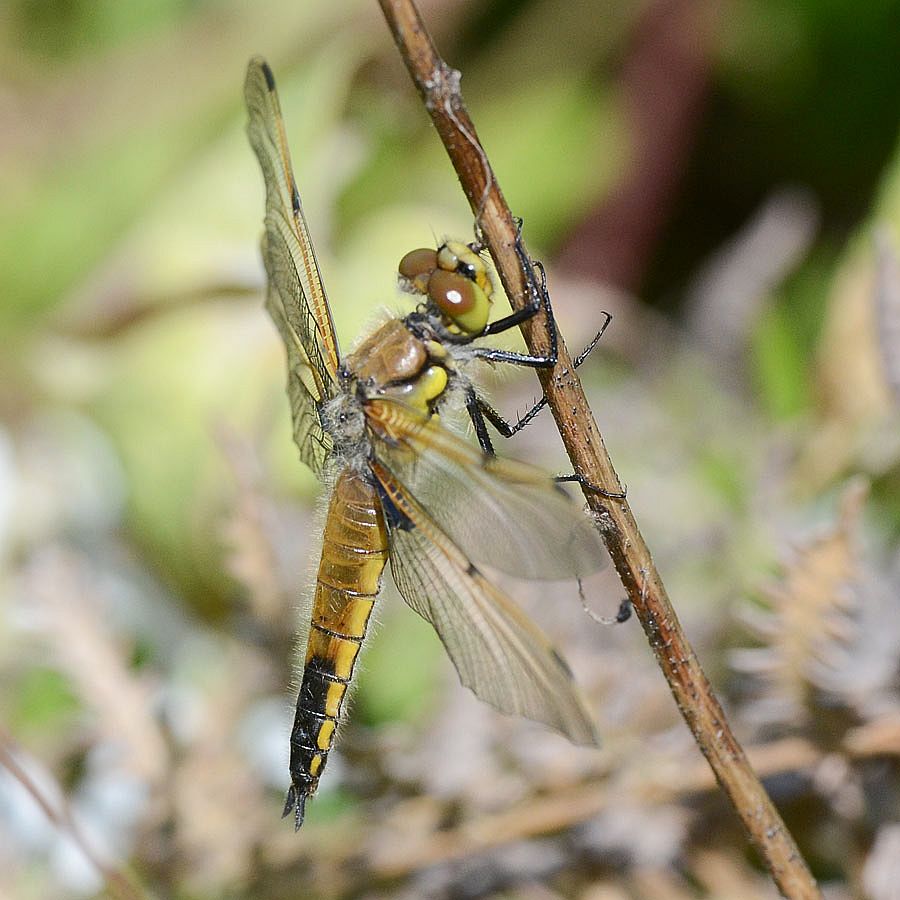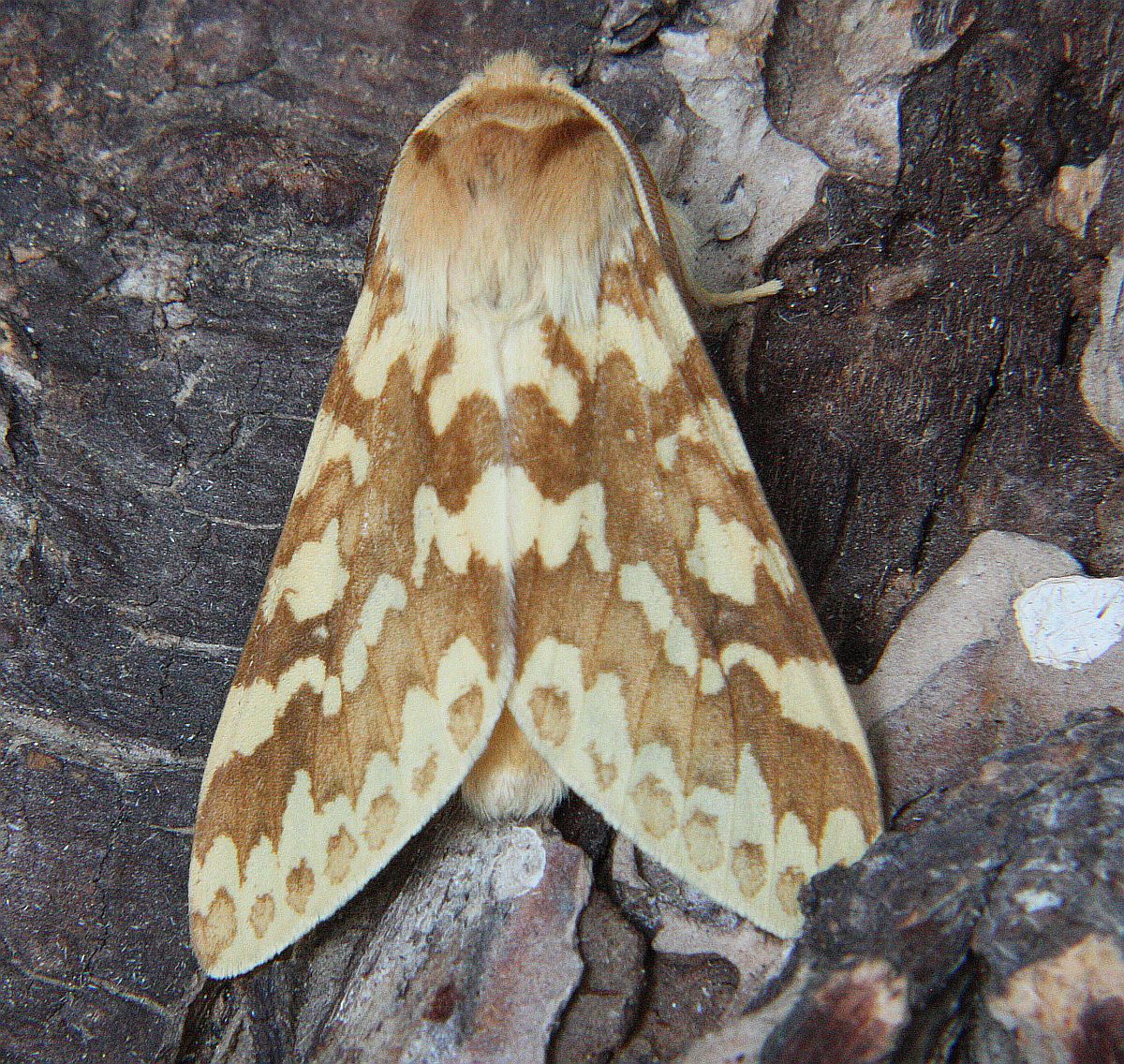2016 May 12 morning
Jeremy Tatum writes: I made a bad mistake in mis-labelling a butterfly in yesterday’s (May 11) posting. My fault – not the photographer’s – and I have corrected the label. Devon Parker’s photograph was not of a Cedar Hairstreak, but a Johnson’s Hairstreak. Devon knew what he had, but caution deterred him from saying so out loud. The identification was confirmed by Cris Guppy, James Miskelly and Jeremy Gatten – and of course I now concur. That, and Devon’s discovery of the egg of the Two-banded Grizzled Skipper on Rubus, are two sensational butterfly discoveries by Devon on the same day! Devon took a second photograph of the Johnson’s Hairstreak, which I didn’t post yesterday, but I do so now:
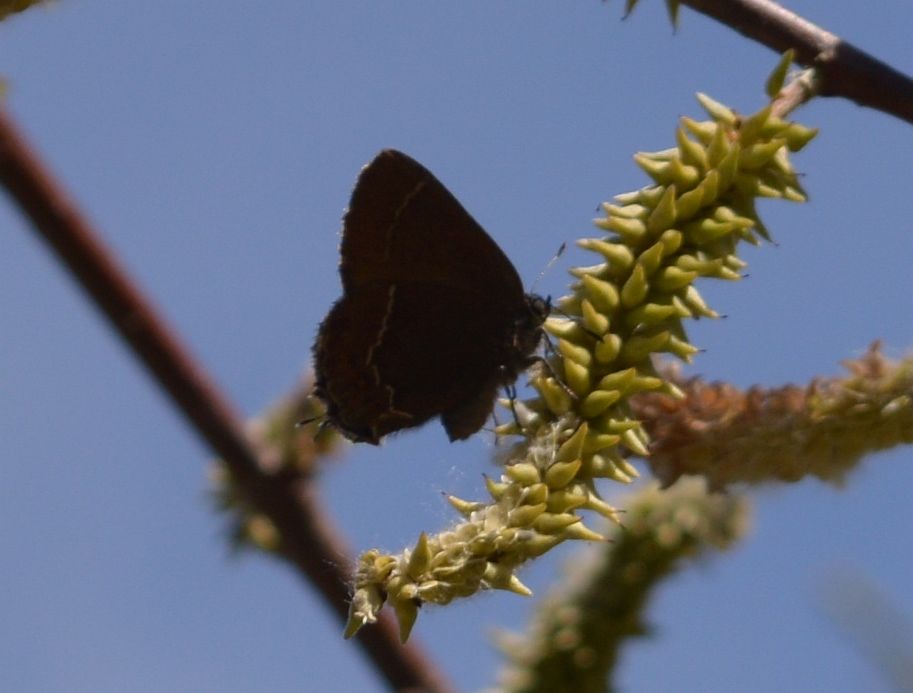
 Johnson’s Hairstreak Loranthomitoura johnsoni (Lep.: Lycaenidae) Devon Parker
Johnson’s Hairstreak Loranthomitoura johnsoni (Lep.: Lycaenidae) Devon Parker
Annie sends us another bee. Can anyone out there identify it for us?
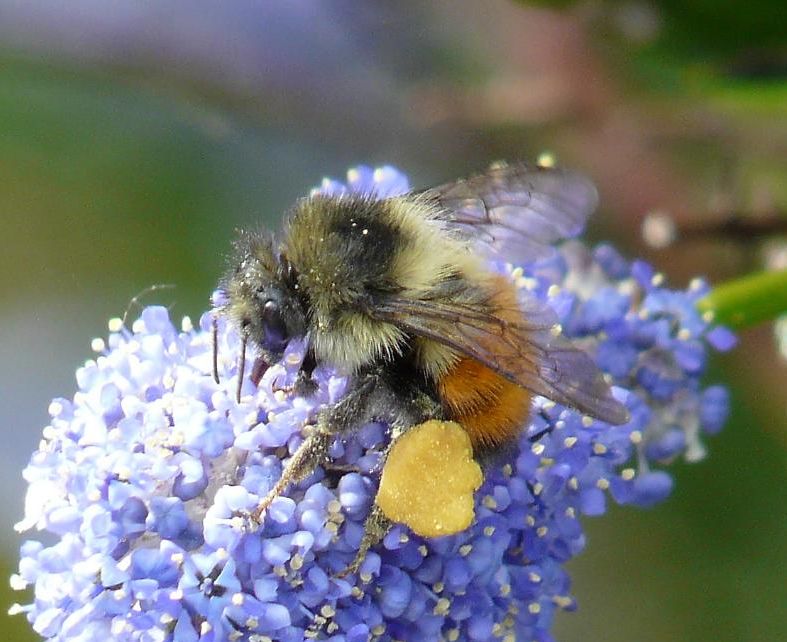
Bumblebee Bombus sp. (Hym.: Apidae) Annie Pang
Marie O’Shaughnessy sends pictures of a Red Admiral and a West Coast Lady from the Mount Tolmie reservoir, May 11.
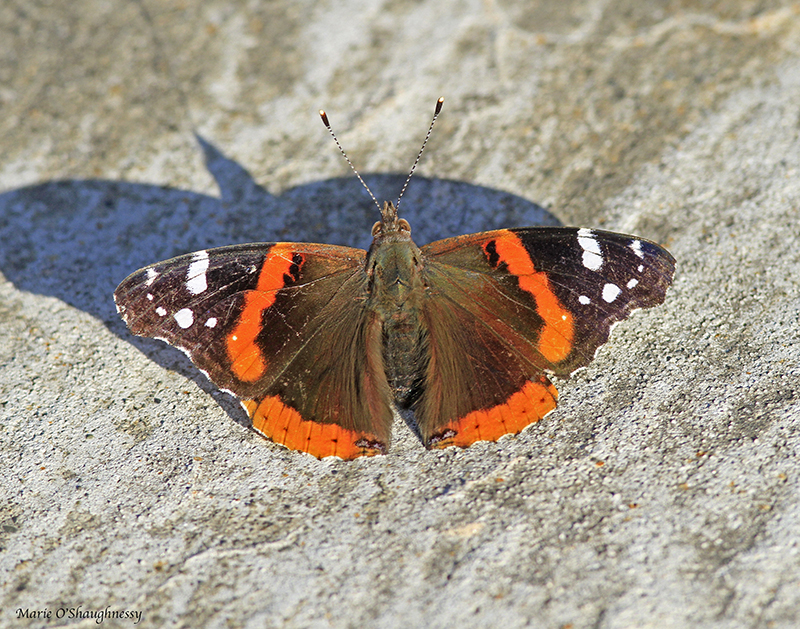
 Red Admiral Vanessa atalanta (Lep.: Nymphalidae) Marie O’Shaughnessy
Red Admiral Vanessa atalanta (Lep.: Nymphalidae) Marie O’Shaughnessy

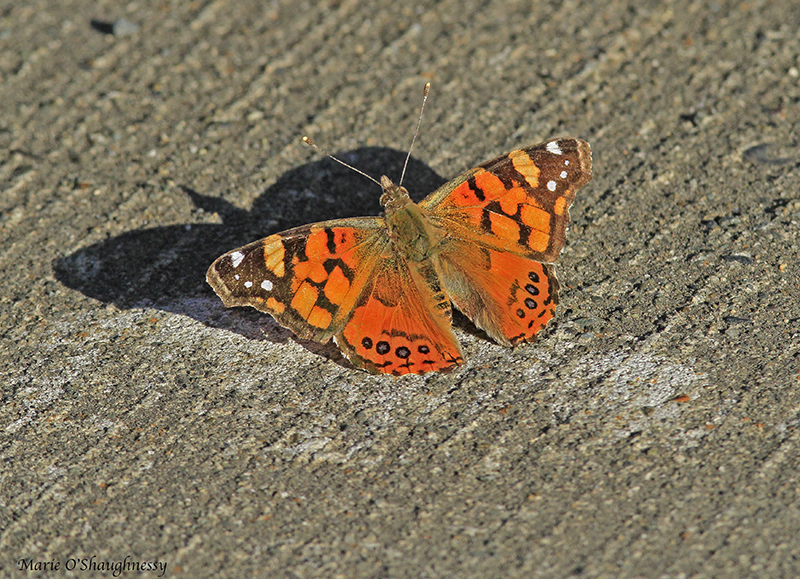
West Coast Lady Vanessa annabella (Lep.: Nymphalidae) Marie O’Shaughnessy

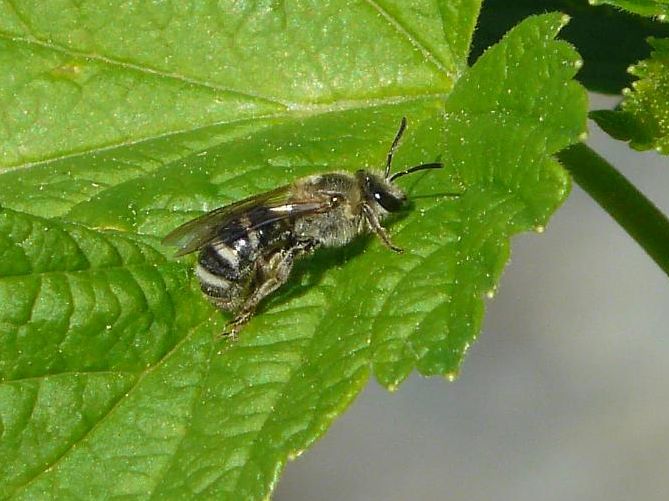
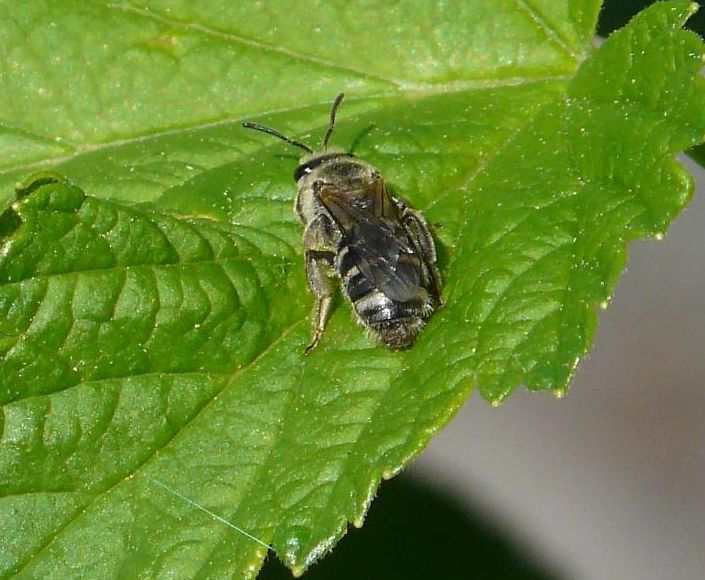
 Bee for identification (Hymenoptera) Annie Pang
Bee for identification (Hymenoptera) Annie Pang